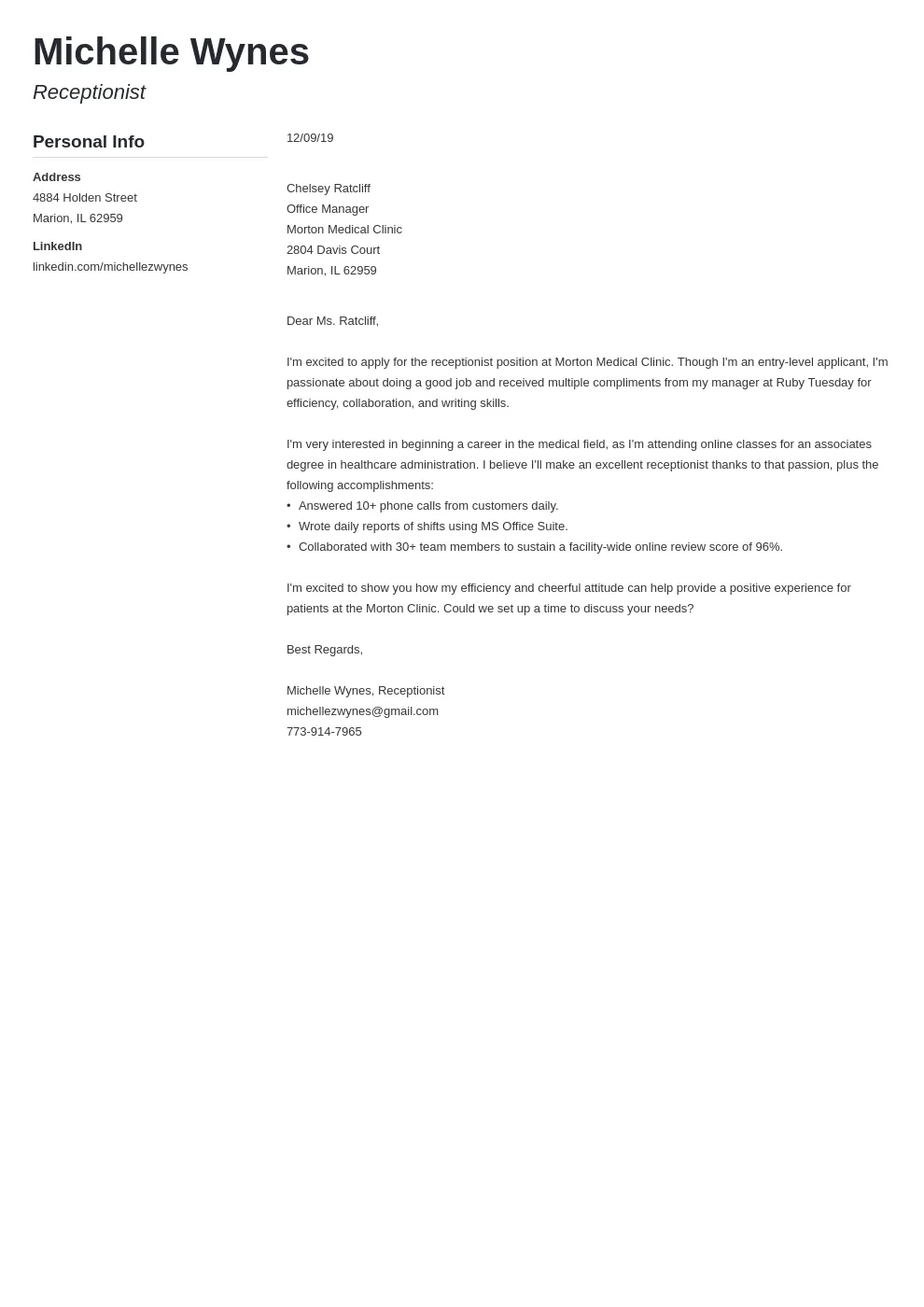What is a Cover Letter
A cover letter is a crucial document that accompanies your resume when you apply for a job. It serves as your first introduction to a potential employer, providing an opportunity to express your interest in the position and showcase your qualifications. Unlike your resume, which provides a snapshot of your work history and skills, a cover letter allows you to tell a story. It’s your chance to explain why you’re a good fit for the company and the specific role, going beyond the bullet points of your resume. It is your voice, your personality, and a chance to make a positive first impression on a hiring manager, setting the stage for a successful application process. The cover letter should be tailored to each specific job you are applying for, highlighting the skills and experiences most relevant to the position.
Why You Need a Cover Letter
Even with limited experience, a well-crafted cover letter is vital for making a strong impression. It allows you to personalize your application, which is especially important if you have no prior professional experience. When you’re just starting out, a cover letter helps bridge the gap by highlighting your enthusiasm, relevant skills, and potential. The cover letter should be unique to you and the job you are applying for. Additionally, many employers consider a cover letter a mandatory part of the application process. Failing to include one could lead to your application being immediately overlooked. A cover letter gives you the opportunity to expand on your experiences and explain how your skills and passions align with the job requirements. It gives context to your skills and education. It shows your personality and adds an additional layer to your application, as a result, it is the first step in showcasing your communication skills.
Cover Letter Basics
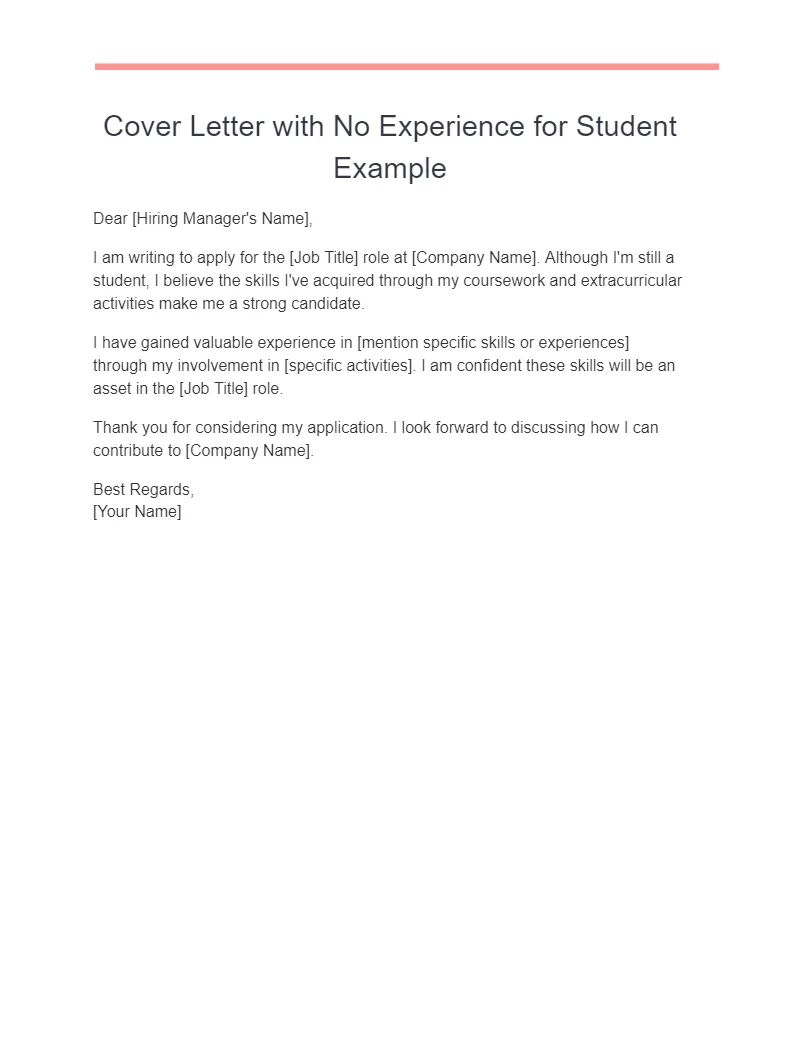
When starting your cover letter, make sure that your writing tone is professional and engaging. Aim to be concise, typically keeping your letter to one page. A well-structured cover letter usually includes an introduction, several body paragraphs, and a conclusion. The introduction should state the position you are applying for and how you found the job opening. The body paragraphs will highlight your skills, experience, and why you are a good fit for the company. The conclusion should reiterate your interest and include a call to action. Use clear and direct language, and avoid jargon or overly complex sentences. Proofread your letter carefully for any grammatical errors or typos. Consider your letter a reflection of your attention to detail. The information in the letter should be organized and easy to read.
Format Your Cover Letter
Formatting is essential to ensure your cover letter is readable and professional. Start with a standard font, such as Times New Roman or Arial, in a 10- or 12-point size. Use single spacing within paragraphs and double spacing between paragraphs. Left-align your text, leaving a margin of at least one inch on all sides. Use clear headings to separate different sections of your letter. These headings can include your contact information, the date, the hiring manager’s information, and the body of the letter. Ensure your letter is well-organized and easy to read. A well-formatted cover letter demonstrates your attention to detail and professionalism. The formatting should be consistent throughout the entire letter. Properly formatted cover letters make your application more appealing and easier for hiring managers to review.
Your Contact Information
At the top of your cover letter, include your contact information. This should include your full name, address, phone number, and professional email address. Make sure your email address is appropriate and professional. Avoid using nicknames or informal email addresses. Your contact information should be clearly visible and easy to find. The purpose of this section is to make it easy for the hiring manager to contact you. You can place your contact information in a header at the top of the document or at the beginning of the letter. Verify that all the contact details you provide are accurate and up-to-date. Ensure that your phone number is active and your voicemail is set up professionally. This information is vital, as it allows the employer to reach out for an interview.
Hiring Manager’s Information
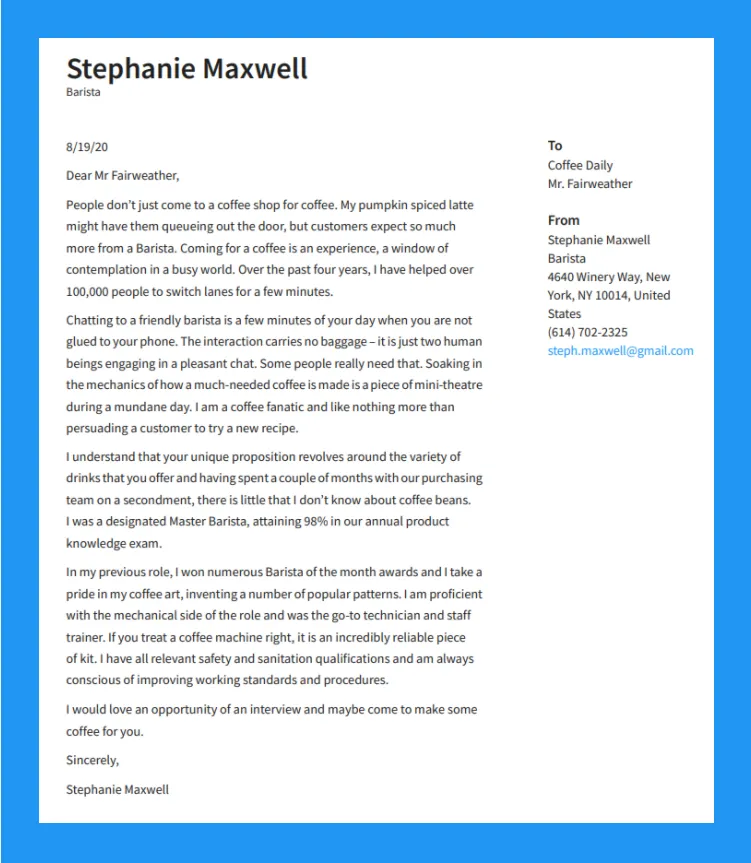
Always address the hiring manager by name if possible. Research the company to find the name and title of the hiring manager or the person responsible for hiring. If you can’t find a specific name, use a professional greeting such as “Dear Hiring Manager.” Address the hiring manager by name to personalize your letter. Addressing the hiring manager by their name, shows that you’ve taken the time to research the company and the specific job. This extra step demonstrates your initiative and attention to detail. If you are unable to find a specific name, make sure to find the department in which the hiring manager is in, to ensure you can address the letter. Personalizing the cover letter makes it easier to be memorable.
Greet the Hiring Manager
Begin your cover letter with a professional and appropriate greeting. A simple “Dear Mr./Ms./Mx. [Last Name]” is generally appropriate if you know the hiring manager’s name. If you don’t know the hiring manager’s name, use a generic greeting such as “Dear Hiring Manager” or “Dear [Department Name] Hiring Team.” Avoid overly casual greetings like “Hi” or “Hello.” Your greeting sets the tone for the entire letter. A polite and professional greeting is essential for making a positive first impression. When you use the hiring manager’s name, ensure that you have the correct spelling and title. If you are unsure of their title, it’s best to leave it out rather than make an assumption. The greeting is more than a formality it is a critical part of your introduction.
The Body of Your Cover Letter
The body of your cover letter is the core of your message. Start with an engaging opening paragraph that states the position you’re applying for and how you found the job. Then, delve into why you’re a good fit. Highlight your relevant skills, experiences, and achievements. Explain how your qualifications align with the job requirements and company values. Use specific examples to support your claims, and quantify your accomplishments whenever possible. Keep each paragraph concise and focused, and make sure each paragraph flows naturally into the next. The body of your cover letter is where you explain your value to the company. The body will showcase your personality, and your written skills. Be sure to convey your passion for the position and the company. The body paragraphs are your chance to show that you are the best fit for the job. This will help you stand out from the competition.
Highlight Skills and Experiences

Even without direct work experience, you can highlight skills gained from other areas of your life. Think about your education, volunteer work, extracurricular activities, and personal projects. Consider the skills that are transferable to the job you’re applying for. These might include communication, teamwork, problem-solving, or leadership skills. When describing your skills, provide specific examples of how you’ve used them. For instance, if you’ve worked on a team project, explain your role and how you contributed to the project’s success. Back up your claims with concrete evidence. This approach allows you to showcase your skills and demonstrates your capabilities. Make sure you align your skills with the job description. Highlighting relevant skills demonstrates your ability to excel in the role. The focus should be on what you can offer the company.
Showcase Your Enthusiasm
Your cover letter is a great opportunity to convey your enthusiasm for the position and the company. Show that you’ve done your research. Express your interest in the company’s mission, values, or products. Explain why you’re excited about the opportunity and what you hope to achieve in the role. Personalize your letter to the company and the specific job. Share why the company appeals to you. Mention specific aspects of the job that excite you. Enthusiastic applicants are more likely to make a positive impression. Your enthusiasm can demonstrate your commitment to the company, which can outweigh a lack of experience. Show your passion for the role and the company. This can make your application more memorable.
Explain Why You’re a Good Fit
Connect your skills and experiences to the job requirements. Explain how your qualifications align with what the employer is looking for. Provide specific examples of how your skills match the job description. Discuss the value you can bring to the company. If the job requires teamwork skills, provide examples of team projects you participated in. If the job requires communication skills, discuss your ability to communicate clearly and effectively. When you explain why you’re a good fit, tailor your cover letter to the specific job. This is your opportunity to demonstrate that you possess the skills and qualities that are sought after. Your ability to align with the requirements of the job will make you stand out.
Address the No-Experience Issue
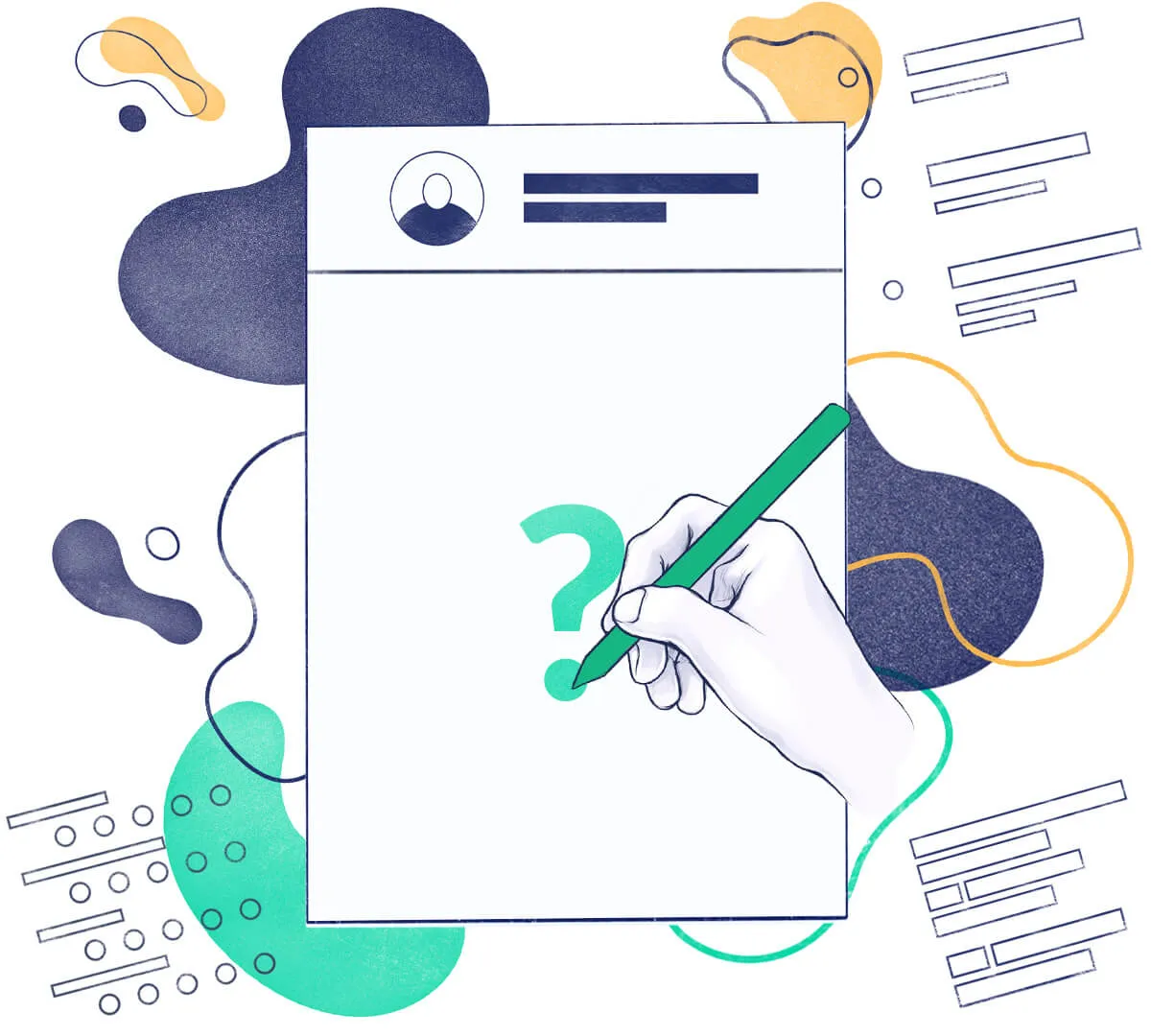
Acknowledge your lack of professional experience. Be honest, but don’t dwell on the negative. Instead, focus on what you do have to offer. Emphasize your transferable skills, such as communication, problem-solving, or teamwork. Highlight any relevant projects, internships, volunteer work, or coursework that has prepared you for the job. Show that you’re eager to learn and willing to take on new challenges. Frame your lack of experience as a chance for growth. Show that you bring value. This positive approach demonstrates your adaptability and your willingness to contribute. This shows you are proactive and self-aware. Highlighting your potential and showing your enthusiasm will help you make a positive impression.
Suggest a Value Proposition
In the cover letter, it’s essential to suggest a value proposition. Your value proposition describes the unique benefits you bring to the company. Discuss how your skills and experiences can contribute to the company’s goals. Explain the specific ways you can help the company. For example, if the job requires data analysis skills, highlight your ability to analyze data. If the job requires customer service, emphasize your experience with customer interactions. Illustrate your strengths, showing how they can benefit the company. Presenting a value proposition shows that you understand the company’s needs. Demonstrate how you can help the company succeed. You can tailor your proposition to align with the role’s requirements. Providing a strong value proposition will make you a more attractive candidate.
Call to Action
End your cover letter with a clear call to action. Express your enthusiasm for the opportunity and your interest in an interview. Include a specific request, such as asking to schedule a meeting. Tell the hiring manager how you plan to follow up. Indicate your eagerness to discuss your qualifications further. Make it easy for the hiring manager to take the next step. Ensure your closing statement is professional and optimistic. The goal is to motivate the hiring manager to contact you. A strong call to action reinforces your interest in the role. This will prompt a prompt and positive response.
Closing Your Cover Letter
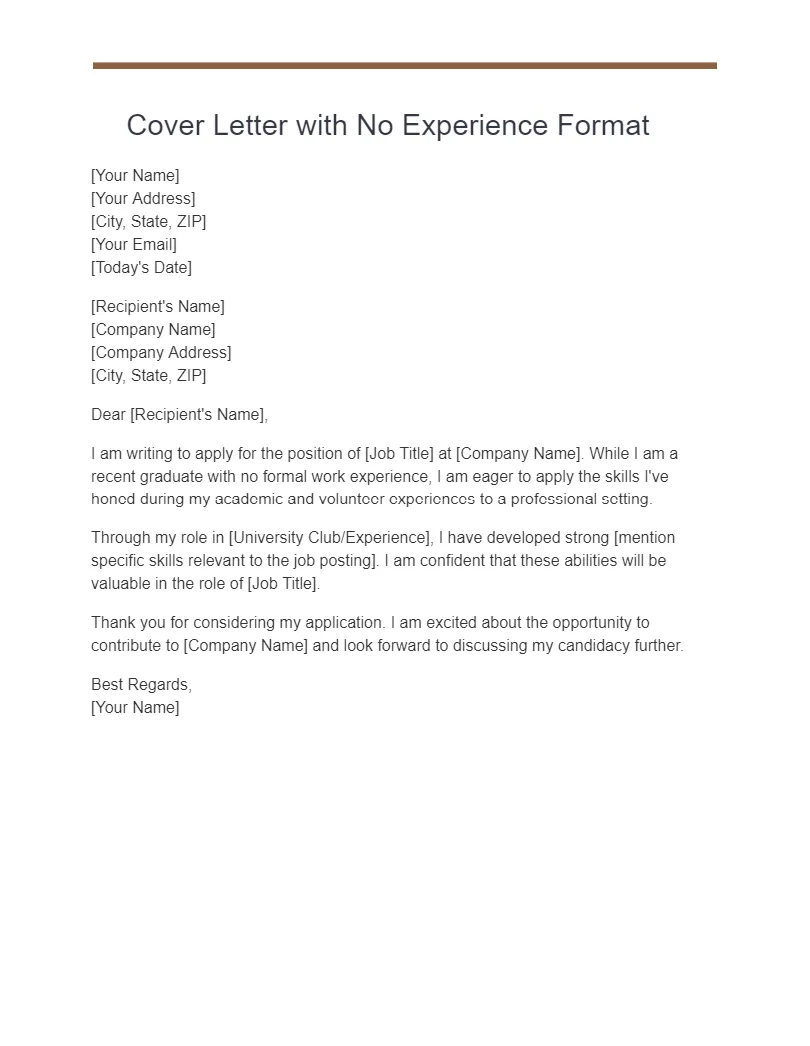
Close your cover letter with a professional sign-off. Use “Sincerely,” “Best regards,” or “Thank you” before your name. Ensure your closing matches the tone of the letter. Include your typed name below the sign-off. If you are submitting a hard copy, leave space for your signature above your typed name. Your closing should be polite and professional. The closing is the final message you leave with the hiring manager. It reinforces your professionalism and your interest in the position. A well-crafted closing ensures a positive and memorable finish.
Sign Off and Proofread
After completing your cover letter, it’s essential to sign off and proofread it. Carefully review your entire letter for any errors. Check for grammatical errors, typos, and formatting inconsistencies. Proofread multiple times, and consider having a friend or family member review it as well. A well-written and error-free cover letter demonstrates professionalism. Ensure that your letter is well-organized. Review your contact information to ensure it is correct. Ensure your letter is free of errors before sending it. A polished cover letter leaves a positive impression on the hiring manager. It shows attention to detail. It highlights your commitment to quality.
Cover Letter Examples for No Experience
Reviewing cover letter examples can provide inspiration. Look for examples that are tailored to your situation. Find templates that highlight your transferable skills. Use the examples to get ideas for how to structure your letter. You can search online to find examples, or use a job search platform. Analyze the language used, and note how the writer addresses the lack of experience. Tailor the example to your skills and experiences. This ensures your cover letter is unique to you. Use examples that resonate with your personality and style. Adjust the format and content to match your needs. Reviewing cover letter examples helps you create a compelling and effective application.
Tailor to the Job Description
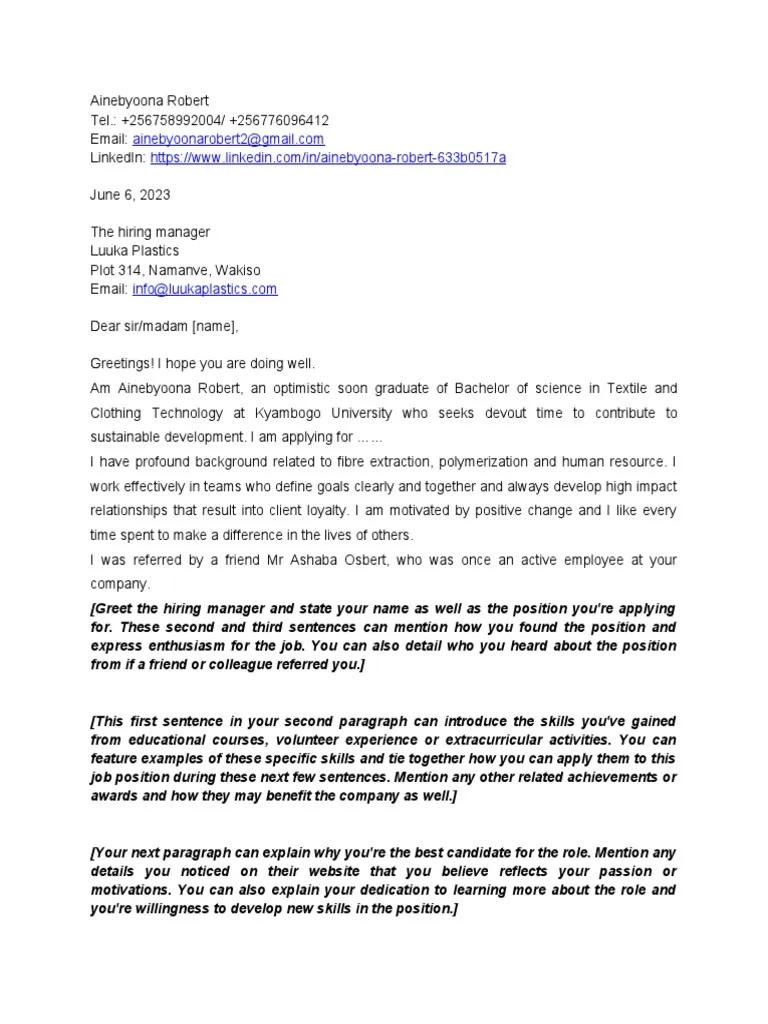
Customize your cover letter for each job you apply for. Carefully read the job description. Identify the skills, experience, and qualifications that the employer is seeking. Use the keywords from the job description in your cover letter. Highlight how your skills and experiences align with the job requirements. Explain how you meet the specific needs of the position. Tailoring your cover letter to the job description shows that you’ve researched the company. Customize your letter to each role. It allows you to demonstrate your understanding of the role. This helps you make a strong first impression. It demonstrates your initiative and attention to detail.
Highlight Transferable Skills
If you lack direct experience, focus on your transferable skills. Transferable skills are skills you have gained that can be applied to various jobs. Identify the skills that are most relevant to the job you are applying for. Common transferable skills include communication, teamwork, problem-solving, and time management. Provide examples of how you have used these skills in other contexts. Highlight how your skills can benefit the employer. Emphasize these skills to increase your chances of landing an interview. Transferable skills can significantly increase your chances of landing a job. Highlighting these skills shows that you’re a well-rounded candidate. Your application will highlight skills to boost your chances.
Showcase Relevant Projects
Showcase any relevant projects you have worked on. This is a great way to show your skills in action. If you have completed school projects, personal projects, or volunteer projects, include them. Describe the projects in detail, and highlight your contributions. Emphasize the skills you used and the results you achieved. If you have created a portfolio, be sure to mention it in your cover letter. Show your initiative and your ability to apply your skills. This allows employers to see your capabilities. Project details can enhance your resume. Show your ability to deliver results.
Highlight Volunteer Experiences
Include any volunteer experiences you have. Volunteer work can demonstrate your skills, your willingness to work and your commitment. Describe your role, responsibilities, and accomplishments in your volunteer positions. Highlight how your volunteer experience aligns with the job requirements. If you’ve worked on a team, emphasize your teamwork skills. If you have dealt with the public, describe your customer service skills. Volunteer work can be a valuable asset. It gives you a chance to hone your skills. It gives you a chance to showcase your passion. Employers appreciate applicants who demonstrate initiative and civic engagement. Volunteer experience allows you to fill the gaps in your resume.
Use Action Verbs
Use action verbs to describe your skills and accomplishments. Action verbs help you to make your statements more dynamic. They show that you are a proactive and results-oriented individual. Start your sentences with action verbs, such as “managed,” “created,” “developed,” or “implemented.” Avoid passive language, and focus on what you did. Use action verbs to make your sentences strong. This shows your accomplishments. Action verbs make your cover letter sound more engaging. A good vocabulary makes your cover letter stronger. Action verbs are vital to showing your abilities.
Edit and Proofread
Edit and proofread your cover letter to eliminate any errors. Carefully review your letter to ensure it is well-written, clear, and concise. Check for grammatical errors, typos, and spelling mistakes. Ensure your sentences flow well. Use spell-check and grammar-check tools, and consider having someone else proofread your letter. Errors can undermine your credibility. A polished and error-free cover letter demonstrates attention to detail and professionalism. The cover letter is a reflection of your attention to detail. The cover letter is your chance to make a positive first impression.
